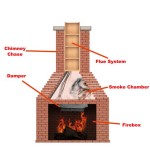Marble Tile Fireplace: A Timeless Accent for the Home
A fireplace serves as a focal point in any living space, offering both warmth and aesthetic appeal. When it comes to fireplace design, the use of marble tile introduces an element of luxury and sophistication. Marble, a metamorphic rock composed of recrystallized carbonate minerals, has been prized for centuries for its beauty, durability, and unique veining patterns. Implementing marble tile in a fireplace surround or hearth can significantly elevate the overall ambiance of a room, creating a timeless and elegant feature.
The versatility of marble makes it suitable for a wide range of architectural styles, from traditional to contemporary. Its natural variations in color and pattern ensure that each marble tile fireplace is unique, adding character and visual interest. Beyond its aesthetic qualities, marble offers practical benefits such as heat resistance and ease of maintenance, further solidifying its position as a premier material choice for fireplaces.
Aesthetic Versatility and Design Options
One of the primary advantages of using marble tile in a fireplace is its aesthetic versatility. Marble is available in a spectrum of colors, ranging from classic white and cream to bolder shades of black, green, and red. Within each color category, there are numerous variations in veining and patterns, resulting in a virtually endless array of design possibilities. The choice of marble color and pattern can significantly influence the overall look and feel of the fireplace and the surrounding room.
White marble, such as Carrara or Calacatta, is a popular choice for creating a clean and bright aesthetic. These marbles typically feature subtle gray veining, adding depth and visual interest without overwhelming the space. White marble is particularly well-suited for modern and minimalist designs, where its simplicity and elegance can shine. Cream-colored marbles, like Botticino, offer a warmer and more inviting feel, making them ideal for traditional or transitional style homes.
For those seeking a more dramatic statement, black marbles, such as Nero Marquina, can create a striking contrast against lighter walls and furnishings. The bold veining in these marbles adds a touch of sophistication and luxury. Green marbles, like Verde Alpi, offer a unique and natural look, while red marbles, like Rosso Verona, provide a warm and opulent feel. The choice of marble color should complement the existing décor and architectural elements of the room to create a cohesive and harmonious design.
Beyond color, the size and shape of the marble tiles also play a crucial role in the overall design. Large format tiles can create a seamless and modern look, while smaller tiles can be arranged in intricate patterns for a more traditional or mosaic-like effect. The tile shape can also vary, from classic squares and rectangles to more unconventional shapes like hexagons or chevrons, adding further visual interest and customization options.
The finish of the marble tile is another important consideration. Polished marble offers a high-gloss, reflective surface that enhances the natural beauty of the stone and adds a touch of luxury. Honed marble, on the other hand, has a matte finish that is more subtle and understated. Honed marble is also less prone to scratches and staining, making it a practical choice for high-traffic areas. Tumbled marble has a textured, rustic finish that adds character and warmth to a fireplace surround.
The way the marble tiles are arranged can dramatically alter the appearance of the fireplace. A simple stacked layout provides a clean and modern look, while a herringbone pattern adds a touch of classic elegance. A subway tile pattern is another popular choice for its versatility and timeless appeal. For a more intricate and decorative effect, consider using a mosaic pattern or incorporating listellos (decorative border tiles) to create visual interest.
Durability and Heat Resistance
Marble is a naturally durable material that can withstand the heat generated by a fireplace. While marble is not completely heatproof, it has a relatively high heat resistance compared to other materials like wood or laminate. This makes it a suitable choice for fireplace surrounds and hearths, where it can handle the radiant heat without significant damage or discoloration.
However, it is important to note that marble can be susceptible to thermal shock if subjected to sudden and extreme temperature changes. To mitigate this risk, it is recommended to use a high-quality sealant specifically designed for marble. The sealant helps to protect the marble from moisture and heat, reducing the likelihood of cracks or discoloration. It is also advisable to avoid placing flammable materials directly on the marble hearth, as this can create a fire hazard and potentially damage the stone.
The durability of marble also depends on its quality and density. Higher-quality marble is typically more resistant to scratches, stains, and chipping. When selecting marble tiles for a fireplace, it is important to choose a reputable supplier and inspect the tiles for any visible defects. Look for tiles that are free from cracks, chips, or excessive veining, as these can weaken the stone and make it more prone to damage. The thickness of the tile also plays a role in its durability. Thicker tiles are generally more resistant to impact and wear than thinner tiles.
Proper installation is crucial to ensuring the longevity of a marble tile fireplace. It is recommended to hire a professional tile installer who has experience working with marble. The installer should use a high-quality mortar and grout that is specifically designed for natural stone. The grout should be sealed to prevent moisture from penetrating the stone and causing stains or damage. The installer should also ensure that the tiles are properly aligned and leveled to create a smooth and even surface.
Routine maintenance is essential to preserving the beauty and extending the lifespan of a marble tile fireplace. Regular cleaning with a mild soap and water solution can help to remove dirt and grime. Avoid using abrasive cleaners or harsh chemicals, as these can damage the marble surface. Stains should be cleaned up promptly to prevent them from setting. Sealing the marble periodically can help to protect it from moisture and stains. The frequency of sealing will depend on the type of marble and the level of use.
Maintenance and Care
Maintaining a marble tile fireplace involves regular cleaning and occasional sealing to protect its beauty and longevity. Due to marble's porous nature, it is susceptible to staining if spills are not addressed promptly. A mild, pH-neutral cleaner designed specifically for natural stone should be used for routine cleaning. Avoid abrasive cleaners, acids, or alkalis, as these can etch or damage the marble surface.
Regular dusting or vacuuming can prevent the buildup of dirt and debris, which can scratch the surface over time. When cleaning spills, blot them immediately with a clean, soft cloth. Avoid rubbing, as this can spread the stain. For stubborn stains, a poultice made of baking soda and water can be applied to the affected area and left to sit for several hours before being rinsed off.
Sealing marble tile is an essential part of its maintenance. A quality penetrating sealer will help to protect the marble from moisture and stains without altering its appearance. The frequency of sealing depends on the type of marble and the level of use, but generally, sealing should be done every one to two years. Test the sealer in an inconspicuous area before applying it to the entire surface to ensure that it does not discolor the stone.
In addition to cleaning and sealing, it is important to avoid placing abrasive or sharp objects directly on the marble surface. Use coasters or mats to protect the marble from scratches and stains. Avoid placing heavy objects on the marble that could potentially cause cracks or chips. With proper care and maintenance, a marble tile fireplace can retain its beauty and elegance for many years.
Furthermore, fireplaces used regularly can suffer from soot accumulation. This can be addressed by using appropriate cleaning products specifically designed for removing soot from marble, avoiding abrasive actions that may scratch the surface. Professional stone restoration services are also available for extensive cleaning and repair if necessary.
By understanding the aesthetic possibilities, durability considerations, and maintenance requirements of marble tile, homeowners can make informed decisions when incorporating this exquisite material into their fireplace design. The result is a stunning and enduring focal point that enhances the beauty and value of the home.

Adding Marble Subway Tile To Fireplace Surround The Diy Playbook

A White Marble Tile Fireplace Update The Diy Playbook Makeover Remodel Surround

Marble Fireplace Makeover Centsational Style

Do It Yourself Divas Diy Marble Tile Fireplace Renovation Herringbone Pattern Tutorial

Our 200 Marble Fireplace Makeover Young House Love

Marble Fireplace Ideas That Bring Elegance To Any Room

These Tiled Fireplaces Are Swoon Worthy Tileist By Tilebar

Tenmoor Marble Tiled Electric Fireplace White Aiden Lane Target

A White Marble Tile Fireplace Update The Diy Playbook

How To Add Herringbone Marble Tile A Fireplace Southern Hospitality
Related Posts








